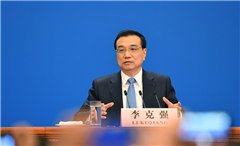China insists no monetary policy change
2017-03-17
Xinhua
China’s central bank said on March 16 that higher interest rates for open market operations were not an interest rate hike and did not indicate a change in its monetary policy stance.
Hours after the US Federal Reserve’s decision to raise interest rates, China’s interest rates for medium-term lending facility (MLF) loans and reverse repos, both open market operation tools of the central bank, went up by 10 basis points.
Interest rates of the six-month MLF and one-year MLF rose to 3.05 percent and 3.2 percent, respectively, while those for the seven-day, 14-day and 28-day reverse repo stood at 2.45 percent, 2.6 percent and 2.75 percent respectively, according to PBOC.
This is the third time this year that the interest rates of open market operation tools have risen.
The higher rates are the result of changes in market supply and demand and do not indicate a shift in China’s monetary policy stance, the People’s Bank of China (PBOC) said in a statement on its website.
China has vowed to pursue a prudent and neutral monetary policy in 2017.
The PBOC attributed the higher rates to improving economies both at home and abroad, rising consumer prices and the Fed’s interest rates hike.
The latest economic data, including industrial output, fixed-asset investment, private sector investment and real estate investment, showed that the Chinese economy was expanding steadily at the beginning of 2017.
Given this economic context, higher capital costs will help deleverage the financial and property market, according to a research note from China International Capital Corporation Limited (CICC).
PBOC said it had lent 113.5 billion yuan ($16.45 billion) in six-month MLF and 189.5 billion yuan in one-year MLF to 17 financial institutions on Thursday, which the CICC said might cushion the pressure for the monetary and bond markets due to possible tighter liquidity conditions.
The central bank has many tools in its policy basket and it is not necessary to over-interpret interest rate moves of open market operation tools, the PBOC added.
Increased interest rates of open market operation tools will also help avoid wild capital outflow and yuan depreciation, the CICC added.
The central parity rate of the Chinese currency, the renminbi or the yuan, strengthened by a hefty 253 basis points to 6.8862 against the US dollar on March 16.
China will continue to push forward reform of its exchange rate formation mechanism and follow a managed floating exchange rate system determined by market supply and demand, Premier Li Keqiang told a press conference after the close of the annual legislative session on March 15.
The RMB has a solid presence in the international currency system and the RMB exchange rate will remain generally stable, he said.


